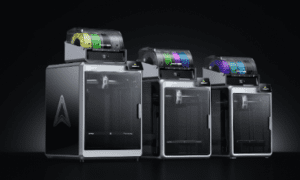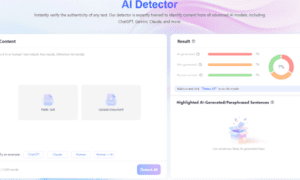The intersection of predictive maintenance technology and consumer appliances represents a seismic shift in how we approach expert Samsung appliance repair services and reliable Samsung appliance repair economics. Just as blockchain technology has transformed financial transactions by eliminating intermediaries, IoT diagnostics are reshaping the appliance repair industry by eliminating the guesswork that has traditionally driven up costs and extended downtime for consumers.
This technological revolution mirrors the disruption we’ve witnessed in fintech, where data analytics and predictive algorithms have replaced reactive problem-solving with proactive risk management. Smart home technology and the future of appliance diagnostics demonstrates how IoT integration is creating new business models in the repair industry. Meanwhile, IoT predictive maintenance systems from leading industry publications show how sensors and machine learning are driving down operational costs across multiple sectors.
The Economics of Appliance Failure Prediction
Think of traditional appliance repair as operating like pre-algorithmic trading markets, where decisions were based on limited information and reactive responses to problems. Today’s IoT-enabled Samsung appliances function more like sophisticated trading algorithms, continuously monitoring market conditions (in this case, operational parameters) and making micro-adjustments to prevent catastrophic failures.
The financial implications are staggering. McKinsey research indicates that IoT-enabled predictive maintenance can reduce maintenance costs by up to 30% while cutting downtime by 45%. For Samsung appliances equipped with SmartThings integration, this translates into a fundamental shift from expensive emergency repairs to cost-effective preventive interventions, much like how automated trading systems have reduced transaction costs in financial markets.
Sensor Networks as Financial Intelligence Systems
Modern Samsung appliances contain sensor arrays that function like distributed ledger systems, continuously recording and validating operational data. These sensors monitor temperature fluctuations, vibration patterns, energy consumption, and component stress levels with the precision of high-frequency trading algorithms tracking market volatility.
The data architecture resembles a blockchain network, where each sensor contributes immutable records to a shared operational ledger. When your Samsung refrigerator’s compressor begins showing early signs of wear, the IoT system captures these micro-signals long before human technicians could detect them, creating opportunities for intervention that preserve both component life and owner budgets.
Machine Learning as Predictive Market Analysis
The AI algorithms processing appliance sensor data operate with the same sophistication as quantitative trading models, identifying patterns and correlations that human analysis would miss. These systems can predict component failures with remarkable accuracy, much like how algorithmic trading systems can anticipate market movements based on complex data patterns.
Samsung’s AI-powered diagnostics analyze millions of data points from similar appliances to build predictive models that understand how various usage patterns, environmental conditions, and maintenance histories correlate with component lifespans. This approach transforms appliance repair from a reactive service industry into a proactive technology sector with measurable ROI.
The Tokenization of Appliance Health
IoT diagnostics create what amounts to a tokenized representation of appliance health, where various operational parameters become quantifiable digital assets that can be monitored, analyzed, and optimized. Each sensor reading functions like a micro-transaction in a larger economic system that determines optimal maintenance timing and resource allocation.
This digitization enables new business models similar to those emerging in decentralized finance. Subscription-based maintenance programs, usage-based warranties, and even appliance-as-a-service models become viable when backed by real-time performance data and predictive analytics that can accurately forecast service needs and associated costs.
Blockchain-Level Security for Appliance Data
The security architecture protecting IoT appliance data employs many of the same cryptographic principles that secure blockchain networks. End-to-end encryption, secure device authentication, and distributed data storage ensure that appliance performance information remains protected while enabling the transparency needed for effective predictive maintenance.
This security framework becomes crucial as appliances accumulate increasingly valuable datasets about usage patterns, energy consumption, and maintenance needs. Like cryptocurrency wallets protecting digital assets, secure IoT systems protect the data assets that enable advanced predictive maintenance and optimal repair timing.
Network Effects in Appliance Ecosystems
The more Samsung appliances connected to IoT networks, the more valuable the predictive insights become for all users. This creates network effects similar to those driving adoption in cryptocurrency and social media platforms, where each additional participant increases the value of the entire system.
Large-scale data aggregation enables machine learning models to identify failure patterns across diverse environments and usage scenarios, improving prediction accuracy for all connected appliances. This collective intelligence approach reduces individual repair costs while improving service quality, demonstrating clear economic advantages for early adopters.
Smart Contracts for Automated Maintenance
Advanced IoT systems enable maintenance protocols that function like smart contracts, automatically triggering service requests when specific conditions are met. When sensor data indicates that a Samsung washing machine’s bearings are approaching failure thresholds, the system can automatically schedule maintenance visits, order replacement parts, and even negotiate service pricing based on current market conditions.
This automation eliminates the human error and delay factors that traditionally inflate repair costs. Like automated market makers in DeFi protocols, these systems optimize resource allocation and timing to minimize costs while maximizing equipment uptime and performance.
The Investment Case for Predictive Maintenance
From a financial perspective, IoT-enabled appliance diagnostics represent a compelling investment thesis similar to early-stage fintech opportunities. The technology addresses clear market inefficiencies, offers measurable cost savings, and creates new revenue streams for manufacturers, service providers, and consumers.
Early adopters of IoT-enabled appliances benefit from reduced total cost of ownership, improved reliability, and access to advanced service options that weren’t previously available. As the technology matures, these advantages compound, creating sustainable competitive advantages for both consumers and service providers who embrace predictive maintenance approaches.
Regulatory Landscape and Standardization
Like the evolving regulatory framework around cryptocurrencies and fintech innovation, IoT appliance diagnostics operate in a rapidly developing standards environment. Industry collaborations around data sharing protocols, security standards, and interoperability requirements will determine which platforms and approaches achieve widespread adoption.
Samsung’s commitment to open standards and cross-platform compatibility positions their IoT ecosystem favorably for long-term growth, similar to how successful blockchain protocols gain adoption through network effects and developer community engagement. This strategic approach ensures that investment in Samsung’s IoT-enabled appliances remains valuable as the broader ecosystem evolves.
The convergence of IoT diagnostics and appliance repair represents more than technological advancement; it exemplifies how data-driven approaches can transform traditional service industries. Like fintech disrupting banking or blockchain revolutionizing value transfer, predictive maintenance technology is creating new economic models that benefit all stakeholders through improved efficiency, reduced costs, and enhanced reliability.





























